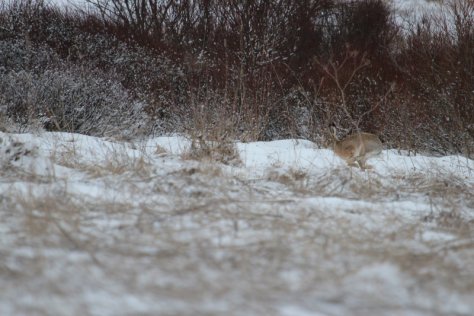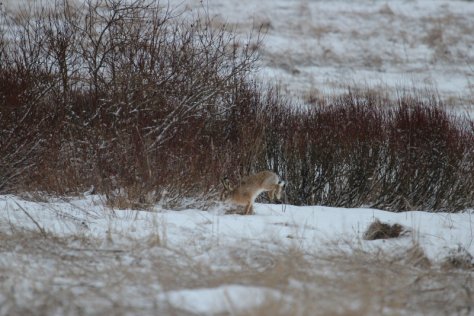Mating season makes brown hares more visible
Photo: Peep Käspre, Lääne-Virumaa
Translation: Liis
Brown hare; European hare Halljänes Lepus europaeus
In the evening the brown hares appear in open landscapes, fields and hayfields. They sleep the day off in thickets at field verges or in groves with dense undergrowth as you can see in the photo. In years with deep snow cover February is the month when they do damage in apple orchards – this year the problem is smaller. In West Virumaa snow reached only up to the knee joint yesterday as Peep’s photo shows.
Brown hares become more active at dusk, in daytime they stay in hiding; trusting their good sense of hearing and fast feet. While brown hares were almost not seen at all a few years ago, things have become better in recent years – the number of foxes is at a low point.
This year the mating period of the fertile brown hares starts towards the end of February; 3-4 males may be scampering after a female in heat and fights between them are quite common. It isn’t simple hare play games either, it can end in slashed fur coats and ears and scarred faces. It is not the courting-time ”rabbit boxing”, standing on the hind legs; thus a female hare not yet ready for mating fends off male hares ”proposing” to her. They are not really small creatures – body length 60 centimetres, average weight a little less than 5 kilos.
From November onwards brown hares wear their winter coat which has a great number of colour varieties and doesn’t offer any particular protection on snow – this winter has been excellent for hiding. Brown hares inhabit Estonia from the 18th century onwards










